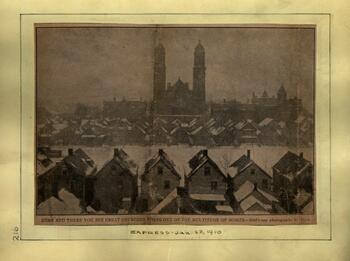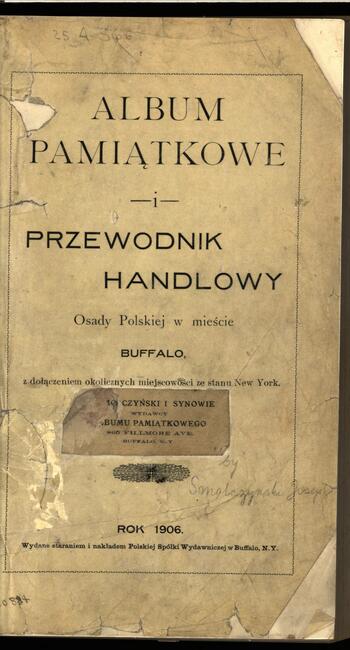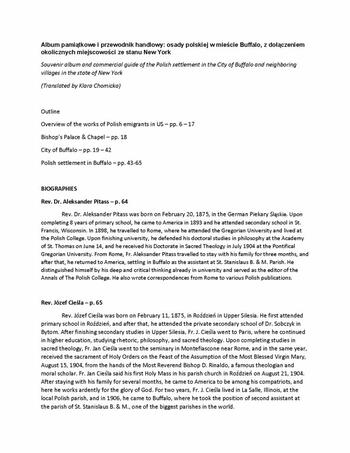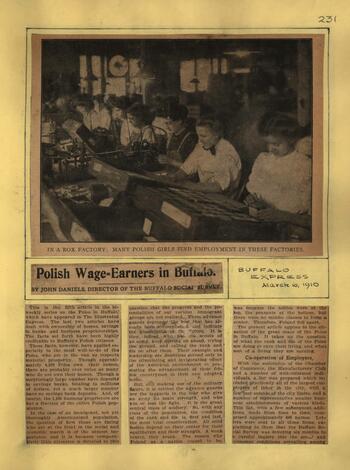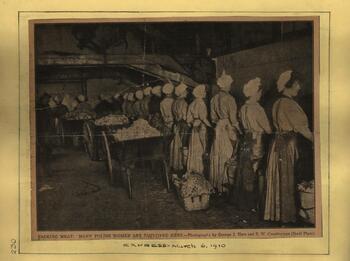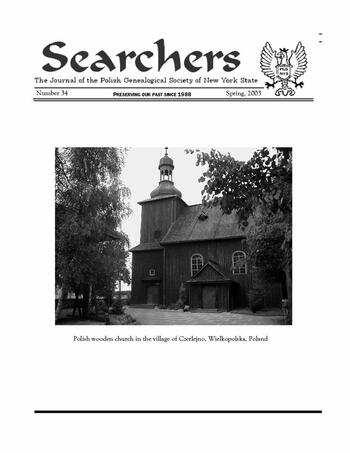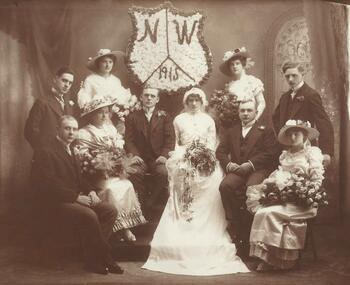Polish settlers came to Buffalo throughout the 19th century. Prior to 1865, the Polish population was small, consisting of migrants passing through in the first rush of exploration of the area. After 1870, a more permanent settlement sprang up around St. Stanislaus, a Polish catholic parish in the Broadway-Fillmore district on the east side of the city. Known to this day as the “Mother Church of Polonia in Buffalo,” the establishment of this parish spurred the development of a lively community of recent immigrants to the U.S. on Buffalo’s East Side.
An additional East Side contingent of Polish immigrants settled in an area dubbed “Kaisertown” on the eastern border of the city. These early East Siders built homes within sight of their churches, read Polish-language newspapers, and sent their children to Polish-Catholic schools. The church and catholic faith were the heart of the community, many societies and social clubs centered on the preservation of Polish-Catholic traditions that were built in the late nineteenth/early twentieth centuries.
Most new arrivals came with the hope of maintaining the agricultural traditions of their lives in Poland, but generally, those that settled in the city of Buffalo worked as laborers in the rail yards, foundries and tanneries located nearby. Polish migrants often found themselves locked out of skilled labor jobs, hindered by their lack of English or German language skills, but found great success within their own community creating businesses that manufactured goods and provided services to local markets such as the municipal market on Broadway, which opened in 1894, and storefronts around the neighborhood.
The 1890’s saw the arrival of the largest number of Poles to the city. Eventually Buffalo’s Polish enclave become one of the largest in the United States with over 75,000 people of Polish decent living in the city by 1940, the majority residing on the East Side.
Polish-Americans in Buffalo assimilated more and more within the wider community through the twentieth century. Most eventually left the city and moved to the suburbs. However, Polish cultural influences are observable on the East Side today. Many people return to the Broadway Market every spring to sample pierogis and other delicacies. Buffalo’s Dyngus Day parade is held on the city’s east side and is anecdotally the largest such celebration in the country. The current St. Stanislaus church, completed in 1886, continues to dominate the Broadway Fillmore skyline as a reminder of the early days of the city’s development and the cultural influence of Buffalo’s Polish inhabitants.
Scrapbook clipping of what is believed to be Corpus Christi Church, a historically Polish Catholic Church located on Buffalo's East Side.
Undated group of women gathered outside of the William Ives branch of the Buffalo Public Library located on Broadway on the East Side of Buffalo.
Published in 1908, this directory gives a history of the Polish Settlement in Buffalo as well as a snapshot of businesses and people of the Buffalo area Polish community.
Translation of Album Pamiatkowe above
Polish-American women working at a box factory on the East Side from an article dated March 6, 1910.
Clipping of Polish-American women working at a meatpacking factory on the East Side of Buffalo in 1910.
The Searchers magazine features genealogical information and reminiscences of life in the Polish community in Buffalo. Issue 34, Spring 2003.
A 1915 wedding photo from Buffalo's Polish Community.
A 1941 East Side street scene showing the Duszynski Building at 1073 Broadway.
